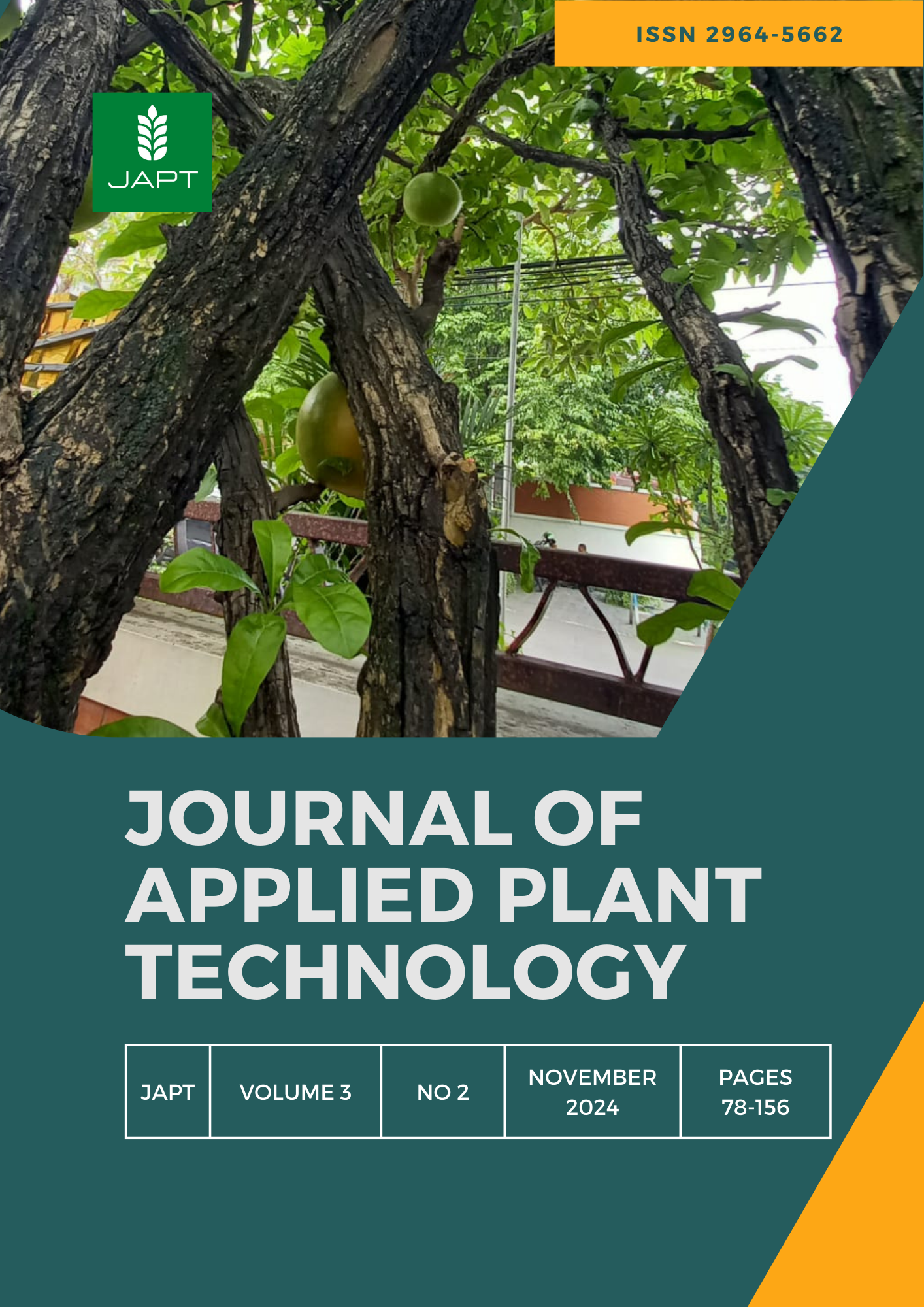Characterization of Bacterial Blight Pathogen on Rice Plants in Sidoarjo
DOI:
https://doi.org/10.30742/xwdype52Keywords:
Rice Leaf Blight, Bacterial Characterization, Production, Staple Crops, Xanthomonas oryzaeAbstract
Rice (Oryza sativa L.) is a staple crop for all Indonesian people. Rice production in Indonesia in 2019 experienced a decline in production. Plant disease attacks are a factor that influences the decline in rice production. Bacterial leaf blight is an important disease in rice plants that can cause yield losses of up to 50%. Characterization of disease-causing bacteria needs to be carried out to develop appropriate, effective and efficient control in suppressing the development of bacterial leaf blight. The aim of this research was to characterize the morphological and physiological characteristics of the bacteria that cause bacterial leaf blight. The method used in this research included the isolation of bacteria that cause bacterial leaf blight disease carried out on rice plantations in Pulungan Village, Sedati, Sidoarjo. Identification is carried out through macroscopic and microscopic observations, analysis of physiological properties through the gram staining test, fermentative oxidative test, yellow colony test on YDC media, urease test, hypersensitivity test, and pathogenicity test. The results of the research show that the bacteria that cause bacterial leaf blight have the morphological characteristics of being yellow, round and shiny. The physiological characteristics of the bacterial isolate are gram-negative bacteria, are oxidative, yellow in YDC media, and react negatively in the urease test.
Downloads
Published
Issue
Section
License
Copyright (c) 2024 Ninik Ari Sayekti, Arika Purnawati, Safira Rizka Lestari

This work is licensed under a Creative Commons Attribution-ShareAlike 4.0 International License.









